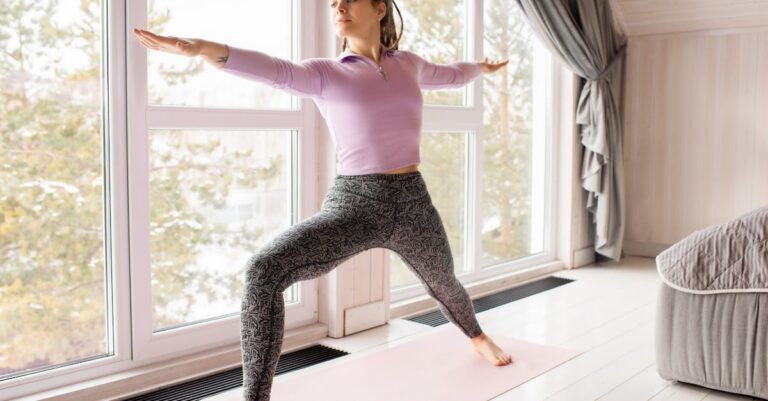Ever feel like push-ups are just… impossible? Maybe you’ve tried them at home, ended up with sore wrists or shoulders, or just felt kinda floppy and unsure if you were even doing it right. Lots of folks want to get stronger using this awesome bodyweight exercise, but getting the form correct is key to actually building strength and, super importantly, not getting hurt. If you’re tired of guessing and want to finally nail the perfect push-up right in your living room, you’re in the right place. We’re gonna break it all down – setting up, the actual movement, common slip-ups, and what to do if a full push-up feels miles away right now. Stick around, and you’ll walk away knowing exactly how to do push-ups safely and effectively.
Setting Up Your Push-Up Zone
Okay, first things first: where are you gonna do these push-ups? You don’t need a fancy gym, just a bit of clear floor space. Make sure you have enough room to stretch your arms and legs out fully without bumping into the coffee table or the dog. Think about it – trying to do a push-up crammed in a tiny space is like trying to parallel park a bus in a spot meant for a scooter. It’s just frustrating!
The surface matters too. A rug or carpet is usually fine. If you have hard floors like wood or tile, you might want a yoga mat for a little cushion under your hands. It’s not strictly necessary, but it can make things comfier. The main thing is that the surface is stable and won’t slide around under you.
Getting into the Starting Position
Alright, space secured. Now, let’s get you into position. Place your hands on the floor directly under your shoulders, or maybe just a tiny bit wider. Spread your fingers slightly, pointing them mostly forward. Now, extend your legs straight back, balancing on the balls of your feet. Your body should form one straight, solid line from the top of your head all the way down to your heels. Imagine you’re a perfectly straight plank of wood – no dipping in the middle, no sticking your butt up in the air.
Here’s a crucial bit: tighten up your middle! Squeeze your tummy muscles (your core) like you’re bracing for someone to gently poke you there. Also, squeeze your glutes (your butt muscles). This helps keep that straight body line and protects your lower back. Your feet can be together or slightly apart, whatever feels more stable for you. Your neck should be neutral, meaning you’re looking slightly ahead at the floor, not cranking your head up or letting it droop down.
The Downward Movement: Lowering with Control
Now for the action part! As you breathe in, slowly bend your elbows and lower your entire body towards the floor. Keep that straight body line the whole time! Think about lowering yourself as one single unit.
Where should your elbows go? Not flared straight out to the sides like chicken wings! This puts unnecessary stress on your shoulders. Instead, let your elbows track back at roughly a 45-degree angle from your body. Imagine pointing your elbows towards your feet rather than out to the walls. How low should you go? Aim to get your chest close to the floor, or at least until your upper arms are parallel to the ground (like a 90-degree angle at the elbow). Don’t just drop! Lower yourself with control. Think about it like you’re carefully lowering a sleeping baby into a crib – slow and smooth.
The Upward Push: Powering Back Up
Once you’ve reached the bottom of the movement, it’s time to push back up. Breathe out forcefully as you push through the palms of your hands, straightening your elbows. Keep that core tight and your body in that same straight line. Don’t let your hips sag towards the floor or leave your butt behind – everything moves up together.
Push all the way up until your arms are fully extended, but try not to aggressively lock out your elbows at the very top. Maintain control throughout the entire movement. It’s one fluid motion: controlled down, powerful up. Think of pushing a stuck car – you brace your whole body and push evenly, right? Same energy here!
Oops! Common Push-Up Mistakes (and How to Fix ‘Em)
It’s super common to make a few mistakes when you’re starting out (or even if you’ve been doing them a while!). Let’s look at the usual suspects:
- Flaring Elbows Out Wide: We talked about this! It’s bad for your shoulders. Fix: Tuck those elbows so they point back at that 45-degree angle. Imagine squeezing oranges in your armpits (weird visual, but it helps!).
- Sagging Hips (The Worm): Your hips drop towards the floor before your chest does, making your back arch. This can strain your lower back. Fix: Squeeze your glutes and abs tighter! Keep that plank shape solid.
- Butt Sticking Way Up (The Pike): Your hips stay high as you lower your chest. This makes the push-up easier because it takes work off your chest and arms. Fix: Lower your hips to be in line with your shoulders and heels. Keep the straight line!
- Head Bobbing: Letting your head droop down or looking way up strains your neck. Fix: Keep your head aligned with your spine. Pick a spot on the floor a few inches in front of your hands and keep your gaze there.
- Not Going Low Enough: Only bending your elbows a tiny bit? You’re not getting the full benefit! Fix: Focus on getting your chest close to the floor or achieving that 90-degree elbow bend. If it’s too hard, try an easier variation first (we’ll get to that!).
Think of learning push-ups like learning to ride a bike. Remember how wobbly you were at first? Maybe you fell a few times. Fixing these little form mistakes is like getting your balance – once you correct them, you’ll be much steadier and stronger.
Can’t Do a Full Push-Up Yet? No Worries!
Hey, if getting into that starting position feels tough, or lowering all the way down seems impossible right now, that’s totally okay! Seriously. You don’t have to jump straight into perfect floor push-ups. There are awesome ways to build up your strength:
- Wall Push-Ups: Stand facing a wall, about arm’s length away. Place your hands on the wall at shoulder height and width. Bend your elbows and lean your body towards the wall, then push back. Super simple, great starting point.
- Incline Push-Ups: Find a sturdy elevated surface, like a kitchen counter, a strong table, or even the stairs. Place your hands on the edge, wider than shoulder-width. Keep your body straight and perform the push-up motion. The higher the surface, the easier it is. As you get stronger, you can use lower surfaces.
- Knee Push-Ups: Get into the push-up position, but rest your knees on the floor instead of your toes. Important: Still keep that straight line from your head to your knees this time, and keep your core tight! Don’t let your hips sag or stick up. Lower your chest towards the floor and push back up.
Think of these options like training wheels or learning scales on an instrument. They help you practice the correct movement pattern and build the necessary strength safely until you’re ready for the standard version. There’s no shame in starting here – progress is the goal!
So, there you have it – the lowdown on doing push-ups correctly at home. Remember, it all starts with finding your space and getting into that solid starting position: hands under shoulders, body straight like a board, core and glutes tight. Control the movement down, inhaling as you go, keeping those elbows tucked slightly. Then, exhale and power back up, maintaining that straight line. Don’t forget to watch out for common mistakes like flaring elbows or sagging hips. And if full push-ups are too challenging right now, embrace modifications like wall, incline, or knee push-ups. They’re fantastic tools for building strength gradually. Be patient with yourself, focus on good form over quantity, and practice consistently. You’ll be surprised how quickly you get stronger!










